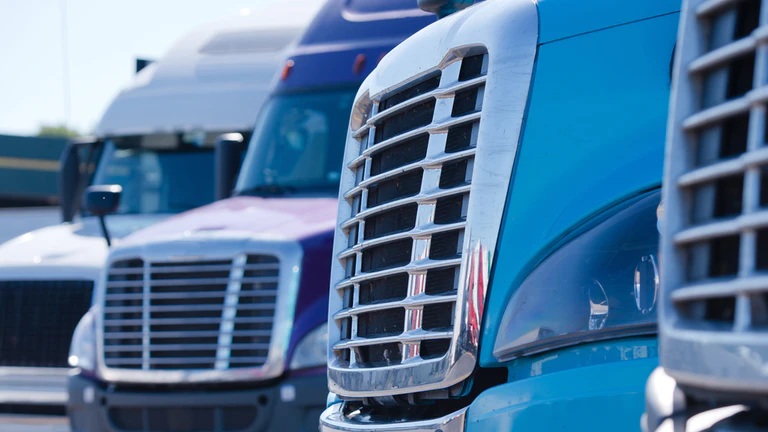Federal regulations drive continued advancements in commercial vehicle technology.
The first major deadline for the next round of federal emissions regulations is upon us, beginning with the 2021 model year vehicles.
The U.S. Environmental Protection Agency (EPA) and National Highway Traffic Safety Administration (NHTSA) Phase 2 greenhouse gas (GHG) emissions joint ruling will again require incremental emissions reductions and fuel economy improvements in 2024 and 2027 for heavy-duty trucks.
The industry anticipates increased adoption of electric trucks, hydrogen fuel cell technology, and other fueling options to help address these requirements. But the fact remains these technologies are projected to only make up a small percentage of trucks on the road over the next few decades.
According to the American Transportation Research Institute (ATRI) Operational Cost of Trucking report, in 2018 13% of carriers surveyed reported using alternative fuel vehicles, classified as anything other than diesel or biodiesel. Electric vehicles accounted for 1% of those alt-fuel vehicles.
While the flashiness of new technologies can often take the spotlight, manufacturers and suppliers have also continued to brainstorm and develop advancements in the traditional diesel engine design as well.
Dave Schaller, industry engagement director for NACFE, referred to this current state of technological advancement and progress we’re in as the “messy middle.”
“We see the next at least two decades being a situation where many of these different solutions are going to get a lot of optimization,” Schaller said. “There will be a growing infrastructure for hydrogen, for battery electric, and other choices…There’s going to be a lot of innovation.”
The added benefit of Phase 2 emissions standards is that they are not only designed to reduce the amount of NOx and particulate matter, but the incremental goal years require improvements to fuel efficiency as well. The advanced technologies added to future vehicles currently in development today will address the needs of both and improve the total cost of ownership by way of reduced fuel consumption.
How has the industry taken additional steps to meet the Phase 2 requirements? We’ve seen this already with accelerated adoption rates of automated manual transmissions. Additionally, technologies like automatic tire inflation systems, predictive cruise control, and 6×2 axle configurations will continue. The bottom line is the technology not only benefits the environment, it also saves the fleet money.
Another example of an advanced technology is cylinder deactivation, or CDA. CDA technology allows an engine to engage or disengage one or many of the various cylinders allowing the engine to operate at a higher temperature without using as much fuel. Engineers at the Southwest Research Institute have provided detailed evidence that CDA, when coupled with other future technologies for the aftertreatment system (think dual SCR, heated diesel exhaust fluid dosing, etc.) can help reduce NOx and CO2 emissions.
Technologies like CDA will certainly make a difference, but they are still a few years away from an available spec or coming standard. In the meantime, this and other technologies will continue to see an evolution of the traditional diesel powertrain.
Ultimately, truck manufacturers are the ones directly beholden to meet the federal guidelines. Truck OEs meet these requirements through the average fuel economy for all vehicles sold. That means they can create the most advanced, most efficient vehicles for fleets, but it won’t matter if a significant amount of sales are still diesels. In that case, the diesel engine must (and will) continue to get incrementally more efficient.
For instance, Cummins is the latest heavy engine manufacturer to tout the company’s 2021 engines, which will all meet Phase 2 GHG emissions requirements. This means not only the company’s X15 Efficiency line, which already adhered to 2021 Phase 2 requirements back in 2017, but also the OE’s Performance line as well.
That doesn’t mean companies like Cummins or truck OEs like Daimler and Volvo aren’t in the process of exploring new technology. But they’re not completely writing off the design updates and advancements to the traditional diesel engines either.
Other technologies, such as increased electrification of current vehicle systems like the direct drive transmissions, e-axles, and more, will also continue to push the move toward electrification, further reducing fuel consumption.
It can be a challenge to see change while our industry is in the thick of it. It’s not until we reflect on these changes over the course of several months or years and look back on them that we can really begin to acknowledge that progress.
Source: https://www.fleetowner.com
CUT COTS OF THE FLEET WITH OUR AUDIT PROGRAM
The audit is a key tool to know the overall status and provide the analysis, the assessment, the advice, the suggestions and the actions to take in order to cut costs and increase the efficiency and efficacy of the fleet. We propose the following fleet management audit.




